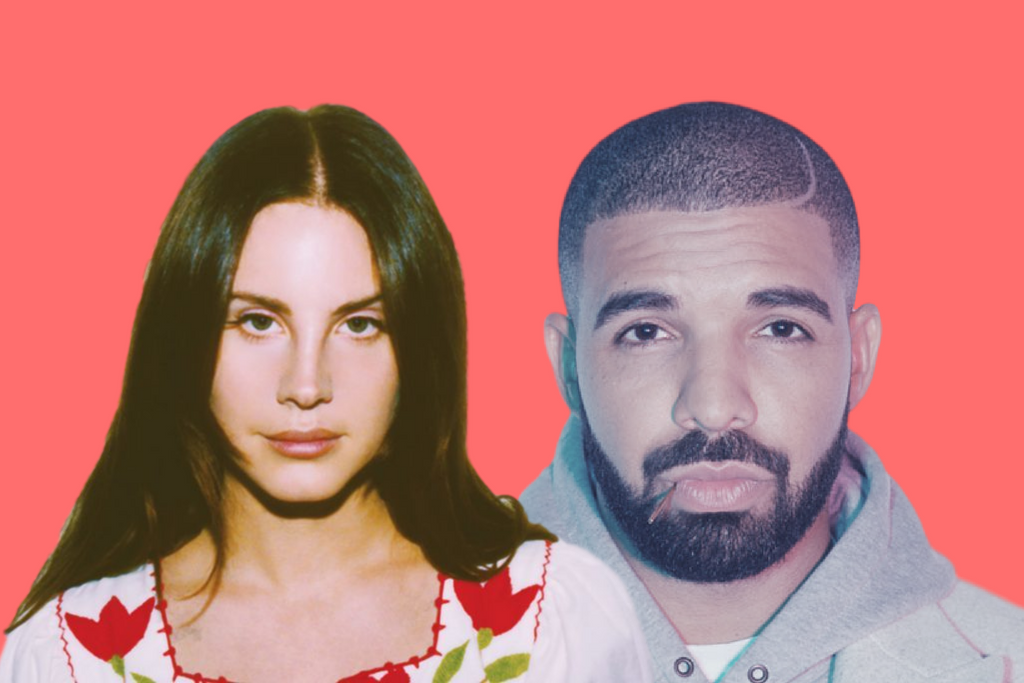The Best Music Writing Of 2017
Here's your summer reading list.

Music criticism gets a bad rap a lot of the time — “Critics are pussies who wanna look cool,” sang Jen Cloher on her track ‘Shoegazing’ earlier this year — but good, vital criticism can be a brilliant aide for fans and musicians alike.
The really excellent writing can reveal new insights into an artist’s process or make connections between times, places and cultures that might have otherwise gone unseen. There was a lot of great music this year, and a heap of great writing too. Here’s some of the best.
Meaghan Garvey Goes Deep On Lana Del Rey
“That void between fantasy and reality, I think, is the real setting for Del Rey’s and Biller’s respective work — a dreamy, self-constructed universe that reconciles the romantic optimism of a young woman’s expectations with the unfulfilling realities of female existence.
The effect is stereoscopic, the way the old red-and-blue glasses tricked the brain into seeing a single 3-D image fused from two distinct two-dimensional shadows. Real-life events and feelings are mediated through the lens of female fantasy, creating what can function like a decoy memory that renders trauma and frustration more beautiful, cinematic, and generally more liveable.”
Meaghan Garvey, a staff writer for the late MTV News, wrote two of the year’s best pieces of criticism in ‘Female Gaze: Lana Del Rey, I Love Dick and The Love Witch’ for MTV, and in her review of Del Rey’s 2017 record Lust For Life for Pitchfork.
In these pieces, which read very well as a set, Garvey unravels Del Rey’s ideology and persona with more nuance than all the critics who wrote about Born To Die put together.
Garvey deftly makes connections between Del Rey’s music and Anna Biller’s The Love Witch and Chris Kraus’ I Love Dick, two works that are, like Del Rey’s music, often misinterpreted by male critics. In her review, she unpacks Del Rey’s obsession with Americana with astonishing depth and clarity.
Read: “Female Gaze: Lana Del Rey, The Love Witch and I Love Dick” in MTV News and “Lana Del Rey: Lust For Life review” in Pitchfork.

Drake’s Australian Tour Sparks Insightful Commentary
“The egotistic neediness that leaks through Drake’s songs irritates me. “You’re to blame for what we could have been / ’cause look at what we are,” he sings on ‘Teenage Fever’, which is perhaps the 15th-best song on More Life. Thanks, arsehole. I imagine that Drake, balladeer of romance-by-phone, has had his number blocked many times.” – Anwen Crawford, writing on Drake in The Monthly
Nobody could stop talking about Drake all throughout November. How could you talk about anything else? It was Drake, in Australia. Luckily, we had Anwen Crawford — one of Australia’s best critics — and Osman Faruqi — one of Australia’s best at Twitter — to write about it.
Crawford’s piece “Drakeworld” for The Monthly is brilliant and beautiful and lyrical, and is an excellent read if you don’t understand Drake’s place in the music landscape (or even if you do). Faruqi’s review of Drake’s show, for The Guardian, puts a pin in the idea of Drake as a rap star and instead recasts him as Drake The Pop Star, a performer for the masses.
Read: “Drakeworld” by Anwen Crawford in The Monthly and “Drake review – Boy Meets World tour reflects the tension at the heart of the popstar” by Osman Faruqi in The Guardian.
Calling Bullshit On Emo’s Sexism
“Jesse Lacey’s legacy will be modelling behaviour to a generation of teenage boys that it is ok to treat women with contempt. If you’re in a band, it’s even more ok, because you are a tortured artist and the pain and suffering of these women is really in the service of art. As a man in a band, you are entitled to the bodies and minds and trust of these girls. It’s your due. It’s like groupies, but less Almost Famous and more creepy.” – Sophie Benjamin on sexism in emo
The allegations against Brand New’s Jesse Lacey were shocking for many listeners who were (and are) fans of early 2000s emo. The revelation inspired brilliant and scorching writing from Sophie Benjamin (on her personal Medium page) and Jenn Pelly, writing for Pitchfork.
Read: “How mid-2000s emo groomed underage girls and poisoned teenage boys” by Sophie Benjamin and “Unravelling the Sexism of Emo’s Third Wave” by Jenn Pelly in Pitchfork.
The Stories Behind Auteurs Making Pop Bids
“When we walk in to hang out with Hayley and the guys, I feel the cold shoulder pretty quickly. Hayley is polite but quiet. She keeps her sunglasses on, fidgets around nervously, and we barely make eye contact.
Once we sit down, I have a distinctly uncomfortable feeling of being back in the high school cafeteria, stuck at a table with a friend who is upset with me but unwilling, or unable, to explain why. Fussing with my phone, I notice on Twitter that not long after we had parted ways, she tweeted something stinging: ‘just enjoy the damn music.’” – Alex Frank’s FADER cover story on Hayley Williams and Paramore
A lot of musicians who were once making music on the fringes made big pushes into the pop realm this year, journeys that were chronicled in a stack of excellent profiles. New York writer Alex Frank wrote many excellent profiles this year, but two of his pieces for The FADER — cover stories on Hayley Williams and Perfume Genius — stood out.
Frank is an incredible profile writer — he gets extraordinarily intimate with his subjects (sometimes causing problems, as in his Paramore feature) — but he’s also incredibly observant and keenly analytical at times. Similarly, Laura Snapes wrote an incredible profile of St Vincent for Buzzfeed that got deeper into Annie Clark than any other profile on Clark ever has. MASSEDUCTION is a challenging and spectacular record, and Snapes’ profile set the mood wonderfully.
Read: “St Vincent is Telling You Everything” by Laura Snapes in Buzzfeed, “Adult Emotions” by Alex Frank in The FADER and “How Perfume Genius Grew Up and Started Thriving” by Alex Frank in The FADER.

Photo by Savvy Creative / Savannah van der Niet
Australian Music’s Diversity Problem, And How To Fix It
“It was a revolutionary art form as it allowed black people to see reflections of their own beauty and power that are never portrayed in mainstream society. What does a white man have to fight for in Australia? A country based on genocide and colonialism of the first black people of this world. White culture is full of violence and cultural dominance, not resilience. White artists creating hip-hop and dominating over black artists is just another form of colonialism in my eyes.” – Wahe Kavara speaking to Kish Lal in Acclaim
Australia has a diversity problem in its festivals and its culture, and Acclaim’s Kish Lal and Pilerats’ Hayden Davies took the time to not only break down the issue, but provide solutions for us. In Lal’s work for Acclaim, she spoke to black women and non-binary people about the music industry’s lack of black voices in hip-hop, speaking to Miss Blanks and Kandere about one of Australian music’s biggest shames.
Davies took a more analytical approach, creating a series of damning diagrams breaking down the amount of women and people of colour on major festival line-ups into cold, hard statistics.
Read: “Australia’s Music Festival Diversity Problem By The Numbers & Some Steps To Improve It” by Hayden Davies in Pilerats and “It’s time to listen to more diverse voices in Australian hip-hop” by Kish Lal in Acclaim.
Documenting Cardi B’s Rise
“The phenomenon of Cardi B is just that: an anomaly in the culture rather than a confirmation of it. She threatens the rules. New York City long ago ceded its rap dominance to the South, but in “Bodak Yellow” Cardi B, a proud uptown kid, does a martial riff on an old flow of the Floridian rapper Kodak Black’s.
Gloating young male rappers like Black and xxxTentacion are currently scaling the heights of Internet-based popularity while being openly abusive to women; Cardi B is open about the abusive relationships she has endured, and what she has had to do to get out of them. To male rappers, the strip club is a temple, an affirmation of their prowess; Cardi B turned the strip club into a site of feminine ingenuity.” – Doreen St. Felix writing on Cardi B in The New Yorker
In a pretty shitty year for the pop charts, Cardi B was a bright spot. Her story is so perfect that at the time, it felt engineered, but it’s so messy and beautiful and perfect that there’s no way it could have been engineered. One of the fun games to play this year was to open some of Cardi’s press clippings from the beginning of the year to late in the year and see how quickly her Instagram following rose — with each new clipping she gained one, two million more followers.
Doreen St. Felix and Lindsay Zoladz, perhaps the two best critics currently working, each wrote thrilling accounts of Cardi’s rise and its implications. Cardi is so much fun naturally that writing about her is often boring, or at least, doesn’t live up to her standards — these two pieces are exceptions.
Read: “Cardi B, the Female Rapper Who Ousted Taylor Swift from the Top of the Charts” by Doreen St. Felix in The New Yorker and “Bloody Slippers: The Fairy-Tale Come-up of Cardi B” by Lindsay Zoladz in The Ringer.
Everything Else
That’s not even the half of it. It’d take a while to compile all the incredible writing this year, but here are a few more pieces that are worth your time:
“Waxahatchee Walks Into a Hurricane Without a Raincoat” by Lindsay Zoladz in The Ringer
The Ringer’s music critic Lindsay Zoladz’s wonderful review of Out In The Storm, the latest Waxahatchee album.
“Quindon Tarver was the child star of Romeo + Juliet: What happened next?” by Dan Condon on Double J
Double J’s Dan Condon speaks to Quindon Tarver, the child singer who featured heavily on the Romeo + Juliet soundtrack.
“The Word of Mouth Resurgence of Arthur Russell” by Lucy Schiller in The New Yorker
Lucy Schiller writes about Arthur Russell’s legacy for The New Yorker.
“One Projection: Harry Styles and the Art of Idealism” by Mitski in The Talkhouse
Musician Mitski writes about Harry Styles and Harry Styles.
“The Cure for Dr Luke?” by Lindsay Zoladz in The Ringer
Lindsay Zoladz writes about pop production in the wake of the Kesha/Dr Luke lawsuit, and Jack Antonoff’s ‘nice guy’ persona.
—
Shaad D’Souza is a freelance writer from Melbourne. Follow him on Twitter here.